AMMAN —
Rula Nashaat was exposed to
war at a child. Her parents, father a mechanical engineer and mother a civil
engineer, tried to make her childhood fun. The father was passionate about art
in all of its forms – painting, music and cinema – and gave his daughter all the
necessary materials to paint and explore her artistic potential. It helped that
her mother taught her painting techniques.
اضافة اعلان
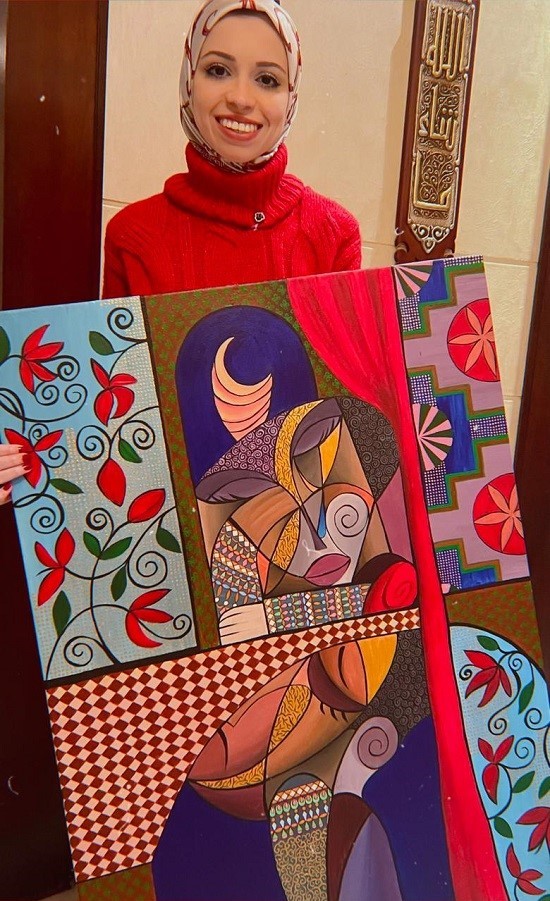 (Photo: Handouts from Rula Nashaat)
(Photo: Handouts from Rula Nashaat)
“I was lucky to be raised in an
environment that appreciates art. I was fascinated by cartoons as a child, so I
used to pause the TV screen on a specific scene and start to paint it down. My
family used to wait till I finish painting to watch TV. Art for me is like
breathing,” she told Jordan News.
Nashaat did not study a university
major related to art; she studied pharmacy to be able to support herself, “because
art in the Arab world lacks appreciation”.
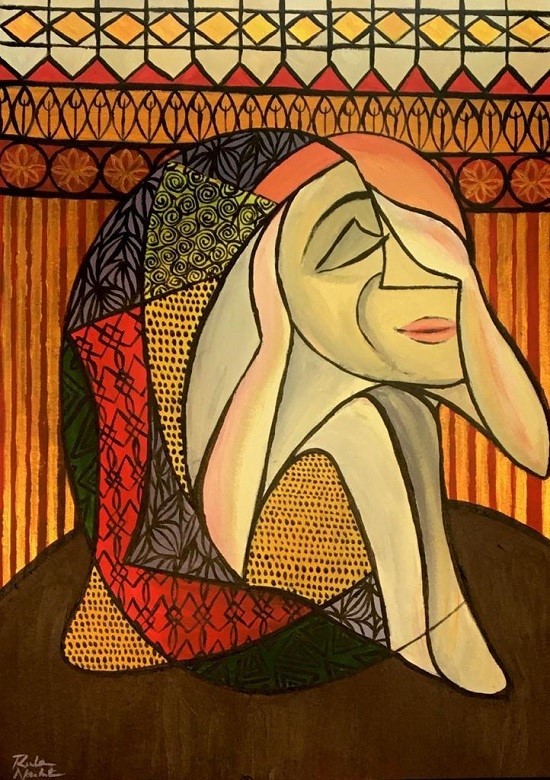 (Photo: Handouts from Rula Nashaat)
(Photo: Handouts from Rula Nashaat)
The artist characterizes her style as
“close to cubism” and wants people “to have a second look and interpret” her paintings.
She uses bright colors, but many of her paintings present a dark side; the sadness
she experienced living the war in Iraq permeates some of her works, even though
she says she tries to maintain a balance between hope and sadness through colors
and “expressions”.
She is inspired by societal issues and
feelings people commonly experience, such as anger and sympathy. To these, she
puts her artistic touch that, she says, “cannot compare” to that of other
artists. Her style is definitely original, as “copying others would be crime
against art and artists”.
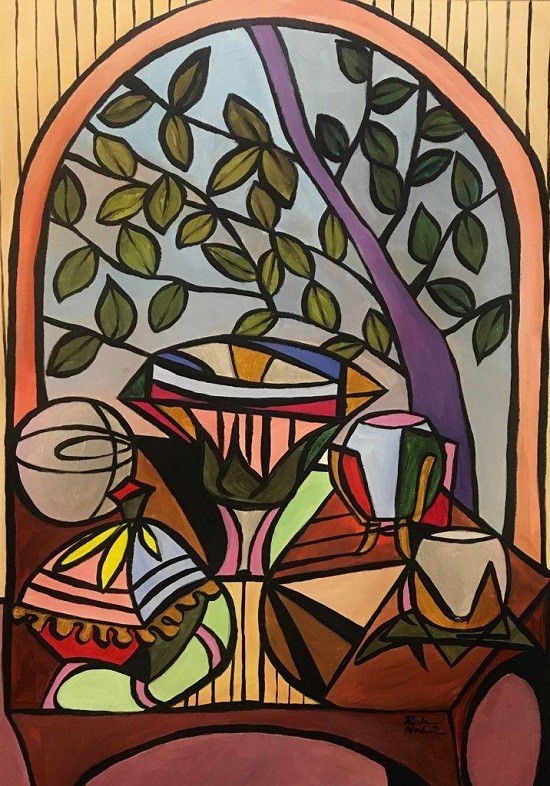 (Photo: Handouts from Rula Nashaat)
(Photo: Handouts from Rula Nashaat)
She is not against artists trying
new styles, patterns, and schools, but “they should not follow the trends but
keep their touch unique and stick to their style”.
“The hardest part of being an artist
is displaying your work, especially in the Arab world, as not many people buy
artwork or appreciate it,” she said.
One of her favorite paintings,
called “Resilience”, which she gifted to “a dear person” renders the “strength
and resilience of women no matter how many issues and obstacles they face”.
She painted “Far from Reality” after
her grandfather passed away. It was a way to represent denial and desire to
escape from reality.
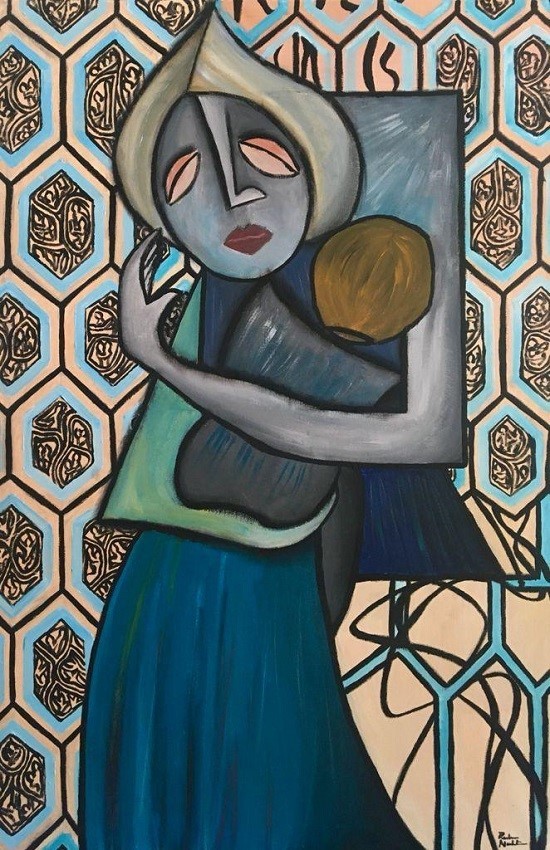 (Photo: Handouts from Rula Nashaat)
(Photo: Handouts from Rula Nashaat)
She first exhibited her works at
Blue Fig café and restaurant. She also participated in an exhibition at the
Rtea gallery, “where the minister of culture at that time was present and
expressed her admiration for one of my painting”.
Plans to do a solo exhibition are
checked by the pandemic, Nashaat said.
Phil Collier, an academic scientist
with a deep love for the creative arts, told Jordan News that he first became
aware of Nashaat’s art when he met her during a visit to
Petra University in February
2020. She showed him some photographs of her paintings, which immediately raised
his interest in her work. He eventually acquired a painting titled "Woman
in chains".
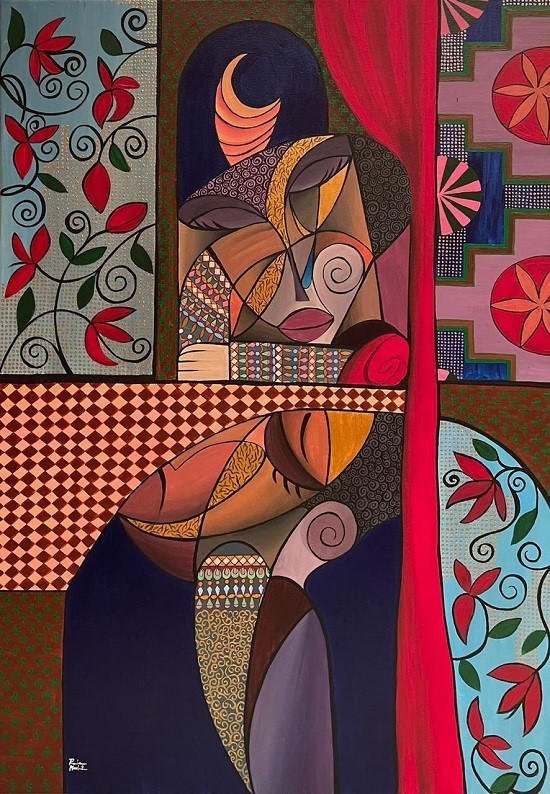 (Photo: Handouts from Rula Nashaat)
(Photo: Handouts from Rula Nashaat)
“Her art can best be described as
Cubist-Expressionist, as informed by artists like Braque, Picasso and Gris, but
with a distinctive Arab style. This Arab style shows through her expressive use
of vibrant and bold colours and abstract Arab designs. One can see the
influence of Arab textiles and interior decoration in all her work. Nashaat’s
painting skills are excellent and give a sound platform for her distinctive
painterly style in oils and acrylics,” said Collier.
According to Collier, her paintings
are thoughtful, powerful and proud political statements on the place and role
of women in Arab society.
Read more Culture and Arts



